When it comes to the visual difference and price point between platinum and gold there’s more than meets the eye.

Platinum is not only known as the hardest and most durable metal on Earth, it’s also one of the most rare and precious metals of all time. The remarkable metal is known to be naturally white in color, durable and hypoallergenic, making it suitable for everyday wear. Jewel Bear jewelry contains pure platinum, along with 5 percent ruthenium, which is the best quality alloy in the jewelry making industry.
Platinum will never lose its exquisite color and beautiful lustre; the metal also has a unique way to handle surface scratches.
When platinum scratches, the durable metal moves from one area to another; so over the years, a platinum ring will always retain its original mass and when professionally polished, any platinum that has shifted from scratching, can be polished back into place again.
White gold, however, requires rhodium re-plating throughout its lifetime to prevent the metal from appearing yellow in color.
Unlike gold, platinum's durability has additional benefits; platinum can hold a precious diamond securely in place for a lifetime, while the metal’s strong and durable quality makes it perfect for diamond jewelry making.
Gold is considered a softer metal and therefore the metal is always mixed with additional alloys to strengthen it. For example, 24k gold is softer than 14k gold.
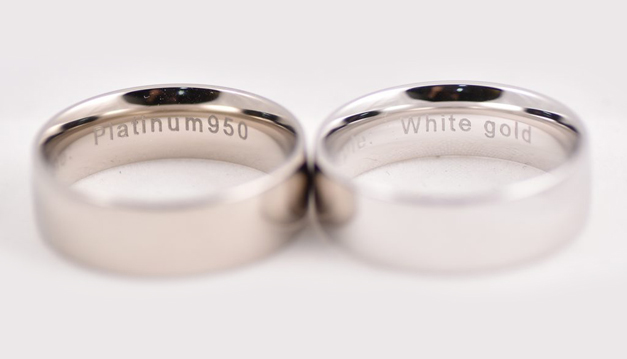
The Appearance of The Metal:
Platinum rings and white gold rings both have a beautiful white appearance. While platinum metal is naturally white, the color of gold is altered by adding different alloys and rhodium plating to make it appear white. 14k white gold and 14k yellow gold have the same gold content and purity (58.5% gold), but the alloys in white gold (as well as the rhodium plating) give it a white appearance, compared to the alloys in yellow gold. Platinum is a naturally white metal which does not change color over time or need additional rhodium plating.
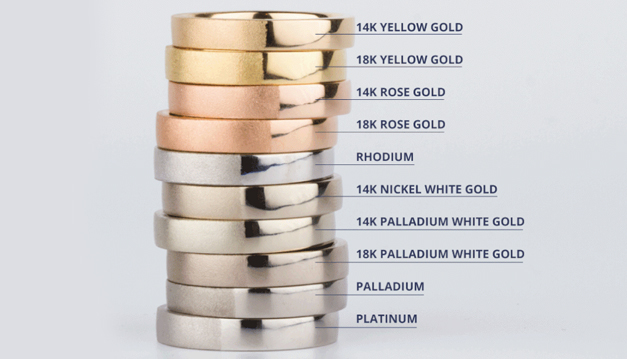
Cost
One of the main deciding factors when choosing between platinum and white gold jewelry is the price tag. Platinum is pure, rare and eternal, making it significantly more expensive. 30 times rarer than gold, only 80 tons of platinum is mined every year compared to 2,700 tons of gold. Another reason platinum is more expensive is because of its density, and so more of it is required to make a ring, compared to white gold. While white gold may be more the more affordable option, keep in mind that you will need to recoat the white gold in rhodium one or possibly twice a year, to keep its beautiful white color.
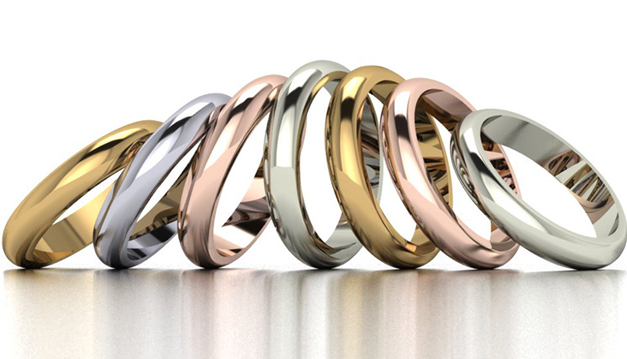
Composition:
Most white gold jewelry is 14K (58.3% pure gold) or 18K (75% pure gold). Gold is a soft metal, and is mixed with other harder metals to strengthen it. Therefore, 18K gold jewelry is less durable than 14k gold. Platinum jewelry is usually 90-95% pure, making it extremely durable, hard-wearing and secure for your diamond or precious gemstone.
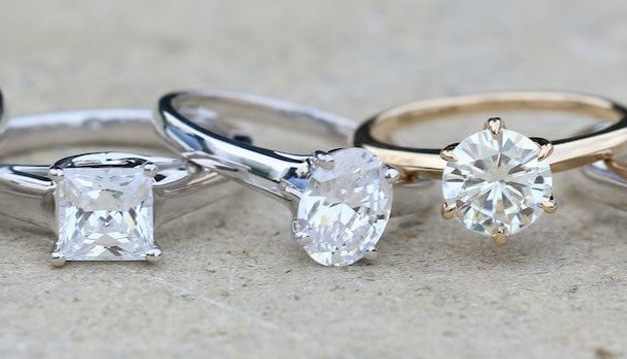
Hypoallergenic Potential:
Platinum’s purity makes it the only true hypoallergenic precious jewelry metal, and is ideal for those with sensitive skin. Although white gold rings do not cause allergy issues for most people, some may develop an allergic reaction from the mix of metals and alloys used in its composition.
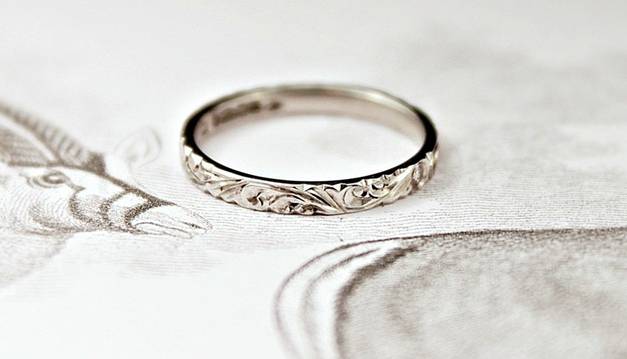
Engraving Implications:
Engraving your jewelry with a special date, name or message is a wonderful way to personalise your creation and make it all the more unique. Both gold and platinum jewelry can be engraved with no issues. Jewel Bear offers an engraving service for all of our platinum and white gold rings.